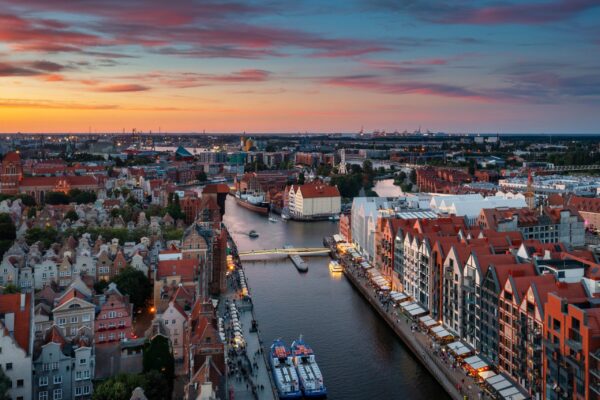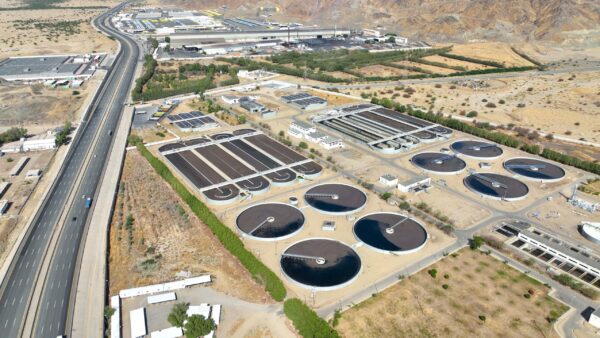
August 27, 2025 | Articles

After months of planning and demolition, work on the transformation of the iconic Gallery at Market East in Center City Philadelphia is both well under way and visible from the street level. When completed, the $325 million project will transform the three-block property into Fashion Outlets of Philadelphia, an upscale hub for outlet fashions. To the thousands of people who pass by and under the property every day, the work is a welcome sign.
Hailed as a cornerstone of downtown Philadelphia’s renaissance when it opened in 1977, the Gallery achieved early success and much attention. An expansion soon followed, enlarging the mall to its current, three-block footprint, and connecting it to city and regional rail lines via a new, multi-million-dollar Center City Commuter Connection in 1984. In the decade that followed, however, the mall lost anchor tenants Gimbels and Strawbridge’s and, like many malls throughout the U.S., began a slow decline that was a concern to shoppers and city officials alike.
Plans for the property’s revitalization began in earnest in 2014, when the Galley’s owner, the Pennsylvania Real Estate Investment Trust (PREIT), sold half of its interests in the property to Santa Monica, California-based Macerich. Macerich develops high-end retail and outlet malls throughout the U.S., and plans for turning the Gallery into the Fashion Outlets of Philadelphia were announced in 2015.
Demolition began on the 730,000-square-foot structure in early 2016, and the project is expected to be completed in late 2018 or early 2019. Hill International was hired by the Philadelphia Redevelopment Authority to oversee the city’s interests in the project, which include improvements to the mall’s public areas and the concourses that connect it to regional rail and subway lines.
Much has been happening at the site, said Lance Rothstein, Hill Vice President and project director. Demolition is mostly complete, construction contracts for interior and exterior work have been let, and passersby can see early signs of the property’s new look.
Notably, the new design calls for demolition of the former Gallery’s main entrance at 9th and Market and replacement with a modern street level entry, so shoppers will enter at-grade, instead of descending a series of exterior steps before entering the mall, Rothstein said.
Renderings on Macerich’s website show a sleek exterior that is more engaging and accessible than the former. Passersby won’t have to go in to see what’s available. Like modern shopping centers of its ilk, Fashion Outlets of Philadelphia shoppers will see an enticing mix of architectural elements and tenant-specific signage to lure customers. “Spanning three city blocks, Fashion Outlets will be the largest cohesive retail project in downtown Philadelphia,” the company states on its website.
“They’re completely re-doing the ground two floors of the exterior, along with new planters, new digital signage, and new places to sit on the Market Street sidewalks which will really make it something special. A significant amount of glass and new entries will open the mall to the new vibrancy of Market Street.” Rothstein said.
The back of the complex, on Filbert Street, now somewhat lackluster, will be renovated to include an open-air dining area. All around, the façade will be more open, allowing both physical and visual access to the city’s vibrant Chinatown section, which abuts the complex to the north.
Underneath the glitz, the project will be challenging. “Its location in the heart of Philadelphia’s shopping district, along Market Street, one of the city’s busiest arteries, atop underground rail lines and at the axis of commuter concourses used by millions of people a year, all contribute to the challenge,” Rothstein explained. In addition, the property is adjacent to historic properties like the famed Reading Terminal Market. It also abuts the busy Pennsylvania Convention Center, is across the street from a federal courthouse, and sits just a few blocks northwest of Independence National Park and its many historic landmarks. Thousands walk past, around and, in some cases, through the property each day.
The project also is only a few blocks away from City Hall. Both the city and the Commonwealth of Pennsylvania have allocated funds for the project, and have tangible and intangible stakes in its successful construction and ultimate viability. In the interim, the project is being scrutinized by myriad city and state agencies, local press, and a general public that is eager to see its completion.
“To say that this project is very visible is an understatement,” Rothstein said.
“As a Philadelphia-based company, we are proud to be working with the Philadelphia Redevelopment Authority on this project, which is a vital link in the city’s long history as a leader in commerce,” said Michael V. Griffin, P.E., Hill Senior Vice President and Mid-Atlantic Regional Manager. “Like all Philadelphians, we are eager to see this landmark site transformed, and have been hired to help ensure that precious city dollars invested in it are well spent.”
by Tricia M. McCunney
Share

August 27, 2025 | Articles

August 12, 2025 | Articles
Hill Welcomes Ben Schwenk as Senior Vice President in the Kingdom of Saudi Arabia

July 27, 2025 | Articles
The Infrastructure Puzzle: Robert Regalado’s Wholistic Business Development Approach

July 13, 2025 | Articles
Tech-Forward Contracting: A Much-Needed Construction Solution

June 23, 2025 | Articles
Jeffrey Hurley Joins Hill’s Northern California Rail Practice

June 23, 2025 | Articles
Ready, Set, Grow: First VP Chad Koelling Takes Charge of Hill’s Mountain West Region

June 8, 2025 | Articles
PMO in Saudi Arabia: The Holistic Approach to Realizing a National Mega-Portfolio